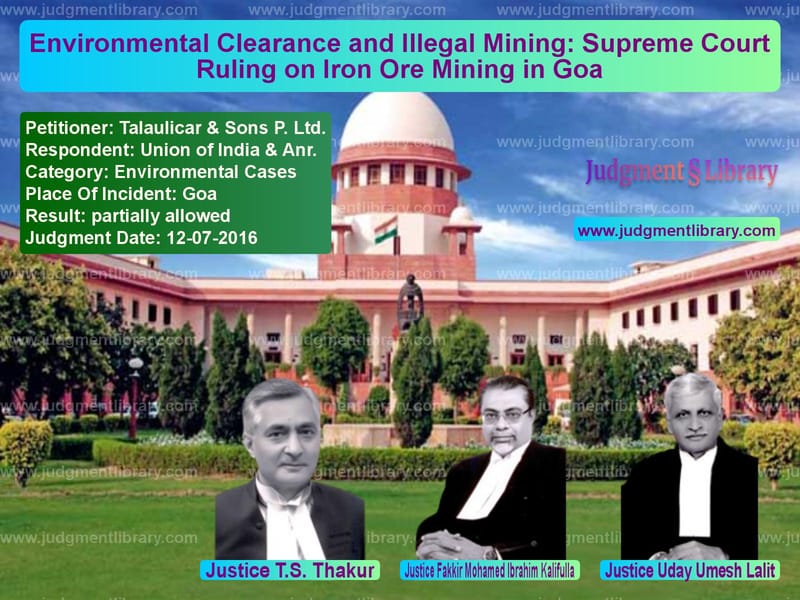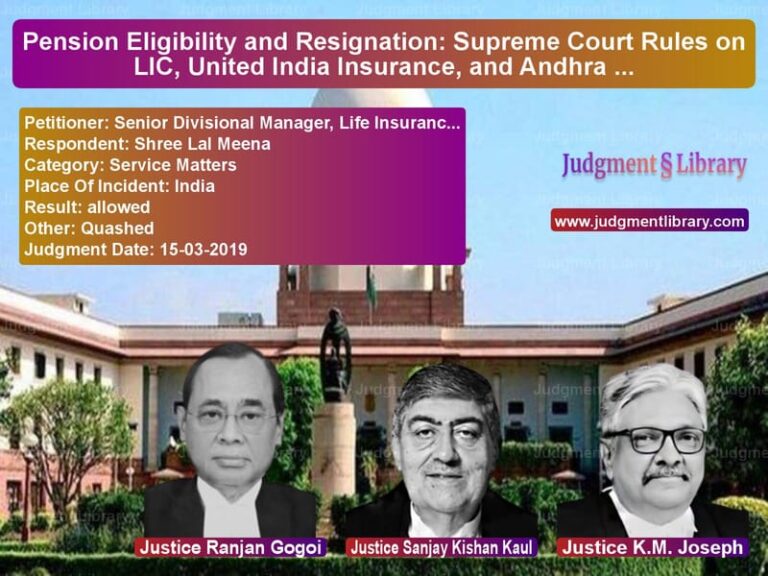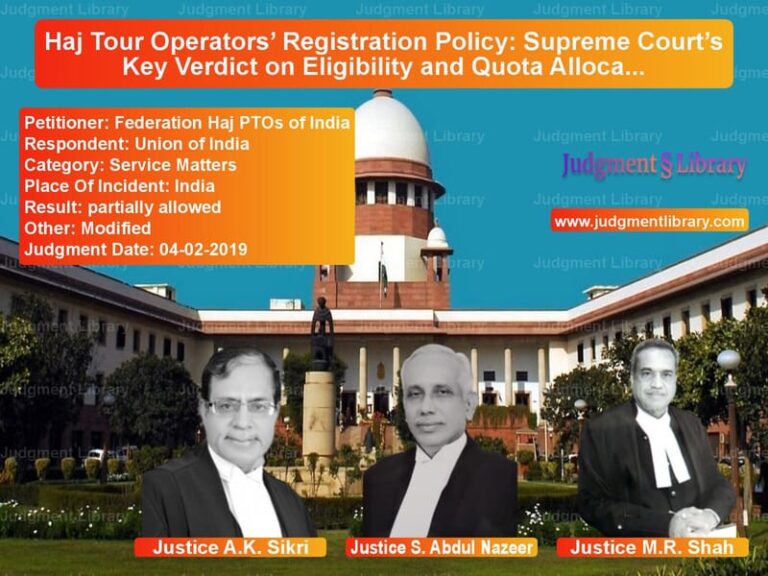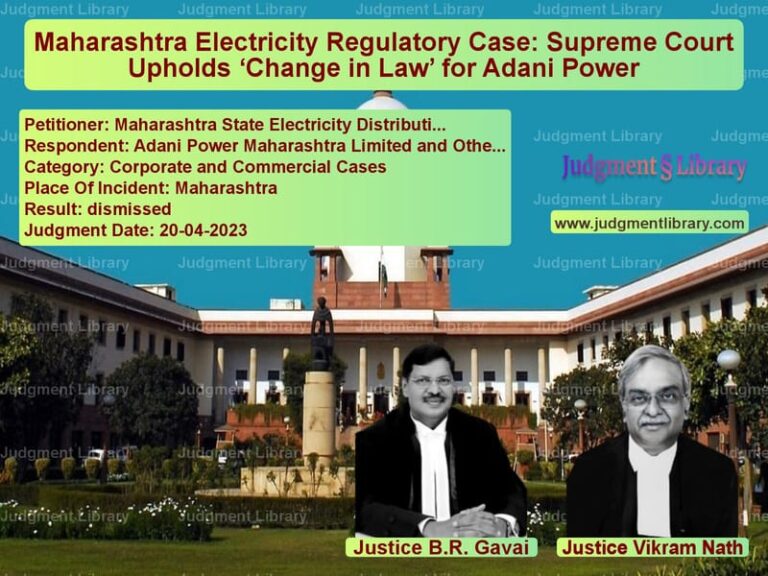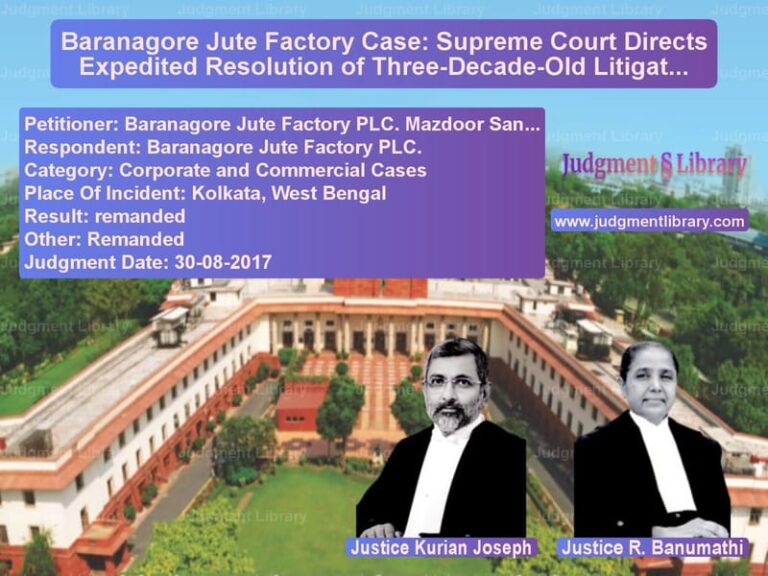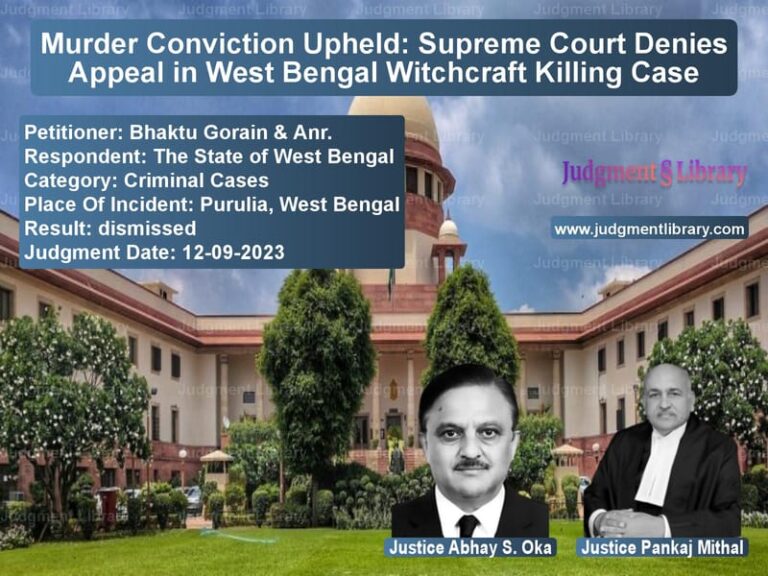Environmental Clearance and Illegal Mining: Supreme Court Ruling on Iron Ore Mining in Goa
The case of Talaulicar & Sons P. Ltd. vs. Union of India brings into focus the critical issue of environmental clearance and illegal mining activities in Goa. The Supreme Court was called upon to determine whether the mining operations of the appellant, Talaulicar & Sons, were conducted in violation of environmental laws and whether the government failed to regulate illegal mining effectively.
The case was initiated as a Public Interest Litigation (PIL) filed by a local resident, challenging the continued mining operations despite the expiry of environmental clearance. The Bombay High Court ruled against the mining company, ordering it to cease operations unless fresh environmental clearance was obtained. Aggrieved by the decision, the company appealed to the Supreme Court.
Background of the Case
Talaulicar & Sons P. Ltd. was granted environmental clearance for expanding its iron ore mining operations in Saniem Sacorda, Goa, in 2005. The clearance, initially issued for two years, was extended after a hydrogeological study was conducted. However, a local resident challenged the validity of the clearance, arguing that under the Environment Impact Assessment (EIA) Notification of 1994, environmental clearances were only valid for five years.
The petitioner contended that the clearance had expired on 25.11.2010 and that mining activities conducted beyond this date were illegal. The Bombay High Court ruled in favor of the petitioner, directing the company to stop mining operations until fresh clearance was obtained. The case was then brought before the Supreme Court.
Key Legal Issues Considered
- Was the environmental clearance granted to the appellant valid beyond five years?
- Did the company continue mining activities illegally after the expiry of its clearance?
- Did the government fail to regulate illegal mining activities in Goa?
- What is the appropriate legal remedy for environmental violations in the mining sector?
Arguments from Both Sides
Petitioner’s Arguments
The petitioner, a local resident, argued:
- “The environmental clearance granted to the appellant expired on 25.11.2010, and yet the company continued mining operations in clear violation of the Environment Protection Act.”
- “Despite multiple complaints, the authorities failed to take action against the illegal mining activities.”
- “Under the EIA Notification of 1994, environmental clearances were valid for only five years, and any mining beyond this period required fresh approval.”
Appellant’s Arguments
The mining company countered:
- “The extension granted in 2007 effectively removed the two-year restriction, allowing continued operations.”
- “The notification of 2006 superseded the previous one and permitted environmental clearance for a longer period.”
- “The company complied with all environmental norms and submitted hydrogeological studies as required.”
Supreme Court’s Judgment
The Supreme Court ruled:
- “The environmental clearance granted in 2005 expired on 25.11.2010, and any mining activity conducted beyond this period without fresh clearance was unlawful.”
- “While the company was allowed to seek an extension, mining operations could not continue in the absence of a valid clearance.”
- “The government had a duty to regulate illegal mining and enforce environmental laws more strictly.”
The Court set aside the High Court’s decision to allow the company to seek an extension while continuing operations, instead ordering that mining must cease until fresh clearance was obtained.
Impact of the Judgment
The ruling has far-reaching implications:
- It reinforces the need for strict adherence to environmental laws.
- It holds both mining companies and regulatory authorities accountable for compliance.
- It sets a precedent for future cases involving environmental clearance and mining activities.
Conclusion
This Supreme Court judgment underscores the importance of environmental protection and legal compliance in the mining industry. It serves as a warning to companies that fail to adhere to environmental regulations and to government authorities that neglect their duty to regulate the sector effectively. Moving forward, stricter enforcement and transparency in environmental clearance processes will be necessary to prevent illegal mining and protect India’s natural resources.
Don’t miss out on the full details! Download the complete judgment in PDF format below and gain valuable insights instantly!
Download Judgment: Talaulicar & Sons P. vs Union of India & Anr Supreme Court of India Judgment Dated 12-07-2016-1741873181449.pdf
Direct Downlaod Judgment: Direct downlaod this Judgment
See all petitions in Environmental Cases
See all petitions in Judgment by T.S. Thakur
See all petitions in Judgment by Fakkir Mohamed Ibrahim Kalifulla
See all petitions in Judgment by Uday Umesh Lalit
See all petitions in partially allowed
See all petitions in supreme court of India judgments July 2016
See all petitions in 2016 judgments
See all posts in Environmental Cases Category
See all allowed petitions in Environmental Cases Category
See all Dismissed petitions in Environmental Cases Category
See all partially allowed petitions in Environmental Cases Category

